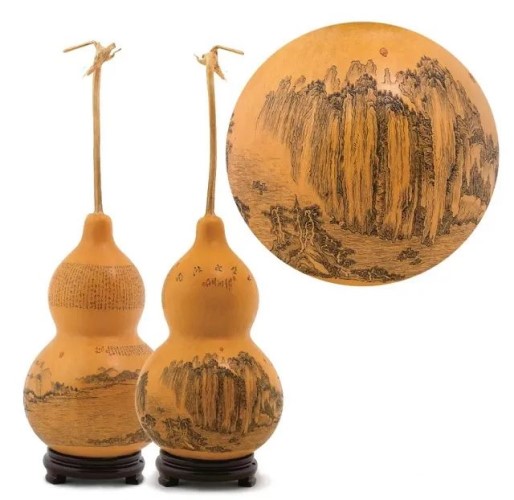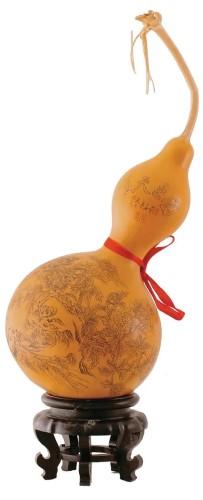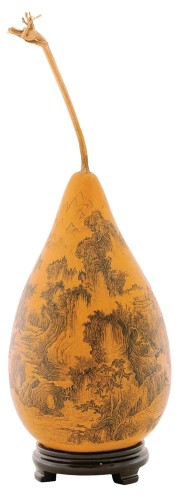Gourd carving invigorated in Linxia, Gansu
Using a knife or needle, a carver meticulously carves the surface of gourds to reproduce traditional Chinese paintings of landscapes, flowers, birds and figures, as well as calligraphy, before outlining them in ink.

A gourd carving work made by Tang Zhanhong [Photo/wlt.gansu.gov.cn]
Gourd carving is a folk art unique to China. Thanks to generations of highly skilled and innovative carvers in Linxia Hui autonomous prefecture, Gansu province, the art has found its own distinctive style and become valuable in the eyes of collectors.
Along with Lanzhou beef noodles and sheepskin rafts, gourd carving is known as one of the Three Treasures of Gansu.

A gourd carving work made by Yang Yonglong [Photo/wlt.gansu.gov.cn]
The gourds, shaped like eggs, were specially cultivated in Linxia in the 1970s. The skin of the variety is delicate and smooth, with a slightly pale yellow color. It becomes brighter after drying and polishing.

A gourd carving work made by Fei Weiqiang [Photo/wlt.gansu.gov.cn]
Linxia has the largest number of gourd carving craftsmen in Gansu. There are more than 20 provincial-level masters, and over 380 senior or sub-senior sculptors.
In 2006, Linxia gourd carving was listed among the first batch of intangible cultural heritages of Gansu province. As of now, 100,000 carved gourd works have been sold at home and abroad, generating more than 18 million yuan ($2.47 million).
-
As AI encounters Dunhuang's art, the ancient caisson ceiling bridges centuries to the present.
View all stories

 Gansu thrives from green development
Gansu thrives from green development  >
>